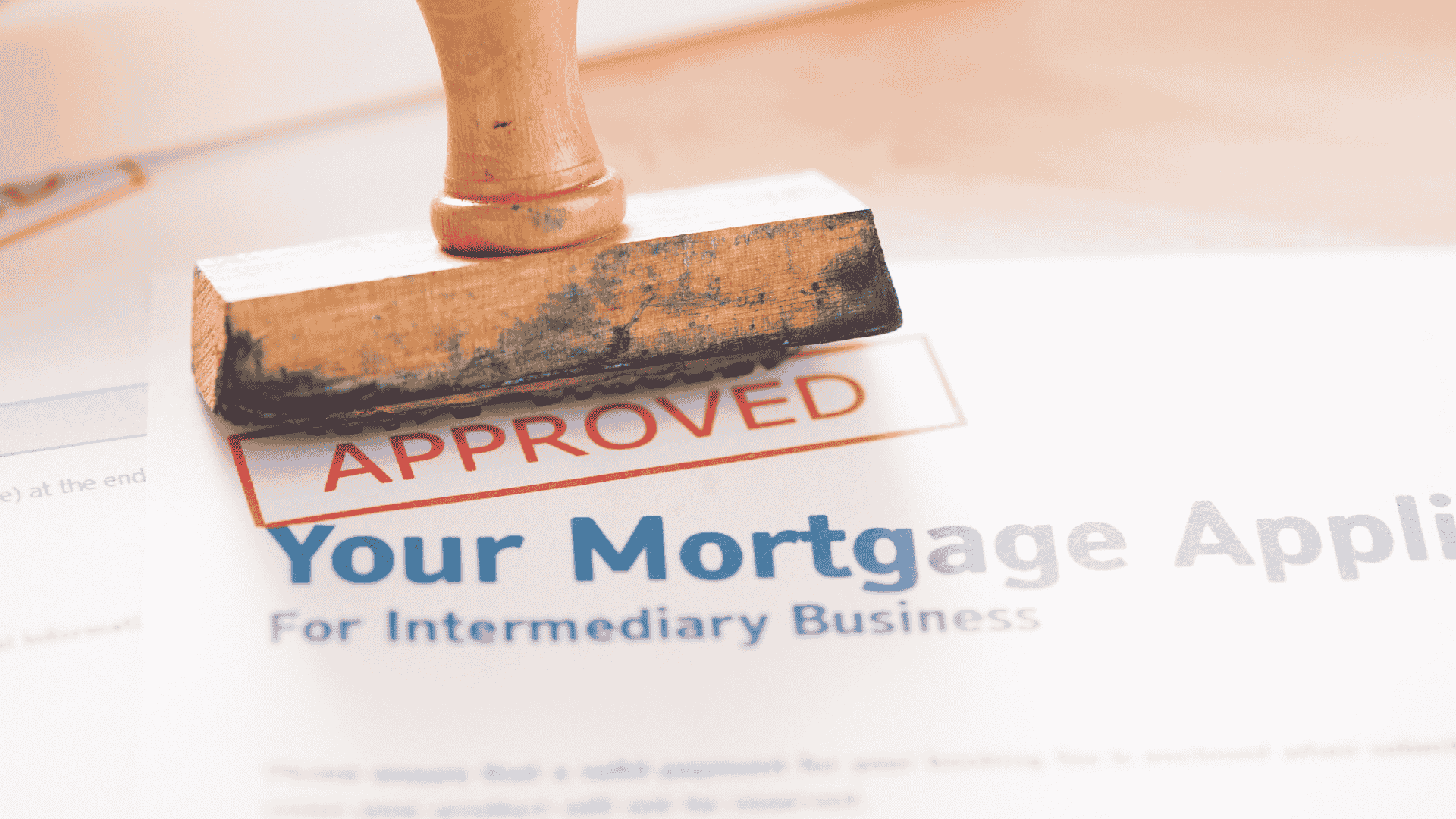U.S. Mortgage Rates Today: June 23rd 2025 – Rates Down on Last Week
Daily U.S. Mortgage Rate Update: June 23, 2025 – 15-Year Refinance Rate Fall
FREE DOWNLOAD: 10 Costly Mistakes Foreigners Make Buying U.S. Real Estate
For real estate investors building a U.S. real estate portfolio, staying abreast of daily mortgage rate fluctuations is paramount. These shifts directly impact your borrowing costs, property affordability, and ultimately, your potential for consistent cash flow.
This daily update, specifically crafted for global property investors, provides today’s average U.S. mortgage rates as of Monday, June 23, 2025. We’ll also dive into the latest expert forecasts and provide a crucial overview of common mortgage options available to non-U.S. residents, equipping you with the knowledge to make informed strategic decisions in the dynamic U.S. market.
Key Takeaways for International Investors (June 23, 2025)
- Rates Decline Slightly: U.S. mortgage rates are showing a modest dip across key products compared to last week.
- 30-Year Fixed (Purchase): Average around 6.83% APR.
- 15-Year Fixed (Purchase): Average around 6.04% APR.
- Expert Outlook: Forecasters like Fannie Mae anticipate continued gradual declines into late 2025 and 2026, reaching potentially 5.8% by the end of 2026.
- Strategic Considerations: Utilize specialized foreign national loan programs (DSCR, Traditional FN, ITIN) to secure properties now, positioning for potential refinancing opportunities if rates fall further.
- Focus on Cash Flow: Prioritize properties that deliver strong consistent cash flow even in the current rate environment, leveraging loan types designed for international buyers.
Related: U.S. Housing Market Forecast to 2030 – What The Experts Are Saying
Today’s U.S. Mortgage Rates (Monday, June 23, 2025)
As of Monday, June 23, 2025, U.S. mortgage rates are showing a slight downward movement across various loan products compared to the previous week. Here’s a snapshot of today’s average rates for purchase and refinance, based on data from leading financial sources like Bankrate and CNET:
| Loan Type | Average Purchase Interest Rate | Average Purchase APR | Average Refinance Interest Rate | Average Refinance APR |
|---|---|---|---|---|
| 30-Year Fixed | 6.83% | 6.90% | 6.82% | 6.88% |
| 15-Year Fixed | 6.04% | 6.13% | 6.11% | 6.20% |
| 5/1 ARM | 6.08% | 6.56% | 6.08% | 6.56% |
| 30-Year Fixed FHA | 6.82% | 6.87% | 7.03% | 7.09% |
| 30-Year Fixed VA | 6.86% | 6.91% | 7.59% | 7.67% |
| 30-Year Fixed Jumbo | 6.89% | 6.94% | 6.87% | 6.91% |
(Rates are national averages and can vary based on lender, borrower’s financial profile, property location, and specific loan terms. Source: Bankrate & CNET, as of June 23, 2025, 6:30 AM EDT.)
Commentary for International Investors:
The slight dip in rates this week offers a marginal improvement in borrowing costs. For international investors, this reinforces the dynamic nature of the market. While rates are still elevated compared to historical lows, the focus remains on identifying properties that deliver robust consistent cash flow to ensure profitability regardless of minor fluctuations.
Expert Insights: What Leading Economists Are Saying About Future Rates
While current rates are important, international investors must also look at the future trajectory. Different experts offer nuanced perspectives on where U.S. mortgage rates are headed:
- Fannie Mae’s Outlook: Mark Palim, Fannie Mae Senior Vice President and Chief Economist, stated in March 2025, “We expect the recent pullback in mortgage rates will provide a small boost to home sales this year.” They anticipate mortgage rates to end 2025 at approximately 6.3% and further decline to 6.2% in 2026. (Source: Fannie Mae, March 28, 2025) A more recent update from April 2025 further refined their forecast, anticipating rates to end 2025 at 6.2% and 2026 at 6.0%. (Source: MPA Magazine, April 29, 2025).
- HAR.com’s Summary of Predictions: HAR.com’s analysis of various industry leaders’ predictions for 2025 notes that Fannie Mae forecasts 30-year fixed mortgage rates averaging 6.8% in 2025 and 6.5% in 2026. The Mortgage Bankers Association (MBA) estimates rates will decline from 6.9% in early 2025 to around 6.4% by year-end. Wells Fargo expects rates to stay above 6.5% throughout 2025, citing global economic uncertainty and Federal Reserve caution. (Source: HAR.com, Undated).
These forecasts generally suggest a continued, albeit gradual, downward trend in mortgage rates, heavily influenced by inflation data and the Federal Reserve’s policy decisions.
Related: U.S. Mortgage Rate Forecast 2025 to 2026
U.S. Mortgage Options for International Investors: A Comparative Table
For international investors, navigating U.S. mortgage options without a local credit history or traditional income documentation can be complex. Here’s a comparative overview of common loan types tailored for non-U.S. residents:
| Loan Type | Typical Rates (Approx.)* | Minimum Loan Size (Approx.) | Income Required? | Loan-to-Value (LTV) |
|---|---|---|---|---|
| Traditional Foreign National Loan | 6.5% – 8.5%+ | $100,000 – $250,000+ | Yes: Verifiable foreign income (employment letters, foreign tax returns, foreign bank statements). Documentation often requires certified translation and Apostille. | 50% – 75% |
| DSCR (Debt Service Coverage Ratio) Loan | 7.0% – 9.0%+ | $75,000 – $150,000+ | No (Property-Based): Qualification is primarily based on the investment property’s projected rental income covering its expenses (DSCR ratio). Borrower’s personal income and DTI are not typically verified. | 70% – 80% |
| ITIN Loan | 7.5% – 9.5%+ | $75,000 – $150,000+ | Yes: Requires verifiable U.S. income (U.S. tax returns with ITIN, pay stubs, U.S. bank statements). Typically for individuals earning income in the U.S. who do not have a Social Security Number. May consider alternative credit. | 70% – 85% |
*Note: Rates are approximate and highly variable based on market conditions, lender, borrower creditworthiness (where applicable), LTV, property type, and specific loan terms. These are general ranges for international buyers, and may be higher than conventional U.S. rates for citizens/residents.
Related: The Best U.S. Mortgages for Non-Resident Foreign Nationals in 2025
Strategic Advice for International Investors:
- Understand Your Needs: Each loan type serves a different purpose. If your goal is purely investment and you prioritize minimal personal documentation, a DSCR loan is often the most suitable.
- Cash Reserves: Regardless of loan type, international investors should be prepared to show significant cash reserves (typically 6-12 months of mortgage payments and property expenses) as a liquidity buffer.
- Professional Guidance: Navigating these options is complex. A specialized foreign national mortgage broker can help you identify the best loan program for your specific circumstances and investment goals.
Related: U.S. Mortgages for UK Citizens: Your Essential Guide
Strategic Implications for International Investors on June 23, 2025
For international investors, today’s rate environment and the expert forecasts highlight several key strategic considerations:
- Embrace the Rental Market: The current affordability challenges for U.S. homebuyers mean a larger and more stable tenant pool. This strengthens the case for international investors to focus on rental properties that generate strong consistent cash flow. (For more, read: “More Americans Renting: A Golden Opportunity for International Property Investors in the U.S.”).
- DSCR Loans as a Primary Tool: DSCR loans continue to be a cornerstone for international investors, allowing property acquisition based on the asset’s performance rather than personal credit or income, which is often a barrier for non-residents.
- Position for Refinancing: While rates are currently elevated, the consensus points to future declines. Acquiring properties now with DSCR loans positions international investors to potentially refinance into more favourable terms in 2026 and beyond, thereby improving long-term cash flow.
- Long-Term Vision: Focus on properties in strong, growing markets that align with tenant preferences (like single-family homes in desirable suburbs). This ensures your investments are resilient and poised for appreciation regardless of short-term rate movements.
Related: The Best U.S. Property Markets for Non-Resident Investors in 2025
Conclusion: Informed Decisions for Global Property Success
Today’s mortgage rate update reinforces the need for agility and informed decision-making for international investors in the U.S. real estate market. By understanding current trends, leveraging expert forecasts, and strategically utilizing the right financing tools, you can confidently navigate the market.
At Cash Flow Rentals, we are committed to providing global property investors with the insights and resources necessary to build and maintain high-performing, cash-flowing portfolios. Stay informed, stay strategic, and continue to identify those lucrative opportunities across the U.S.
Related: The Best U.S. Real Estate Markets for First Time Investors
Previous Mortgage Rate Update: U.S. Mortgage Rates Hold Firm on June 22nd 2025
GET PRE-APPROVED TODAY!
Start your U.S. real estate investment journey today and unlock exclusive financing opportunities. Book a Free 1-2-1 Discovery Call with a member of our senior management team to discuss your personalized strategy.
“Having personally invested in over 120 US rental properties from overseas, I know the true value of getting the right advice and support.
David Garner – Cashflow Rentals
GROW YOUR WEALTH WITH U.S. REAL ESTATE
Start your US real estate investment journey today, and book a Free 1-2-1 Discovery Call with a member of our senior management team.
“Having personally invested in over 120 US rental properties from overseas, I know the true value of getting the right advice and support.
David Garner – Cashflow Rentals

Frequently Asked Questions (FAQs) on U.S. Mortgage Rates for International Investors
Here are answers to common questions international investors have about U.S. mortgage rates and financing.
Q: What are the main types of mortgages available for international investors in the U.S.?
A: For international investors, common mortgage types include Traditional Foreign National Loans (requiring foreign income verification), DSCR (Debt Service Coverage Ratio) Loans (qualifying based on property income), and ITIN Loans (for those with an ITIN but no SSN, requiring income verification).
Q: Do international investors need a U.S. credit score to get a mortgage?
A: Not always. While Traditional Foreign National and ITIN loans may look for some credit history (often accepting international credit reports or alternative data), DSCR loans typically do not require a U.S. credit score, as they qualify based on the investment property’s cash flow.
Q: Are mortgage rates higher for international investors than for U.S. citizens?
A: Generally, yes. Due to perceived higher risk and additional underwriting complexities, mortgage rates for international investors (especially for non-QM products like DSCR and ITIN loans) can be slightly higher than the lowest rates available to U.S. citizens with strong credit for conventional loans.
Q: What is a DSCR loan and why is it popular with international investors?
A: A DSCR loan is a type of Non-QM loan where qualification is based on the investment property’s rental income covering its debt. It’s popular with international investors because it often doesn’t require U.S. personal income verification or U.S. credit history, simplifying the financing process for non-residents.
Q: What are typical down payment requirements for international investors?
A: Down payment requirements for international investors are generally higher than for U.S. citizens, typically ranging from 25% to 40% of the property’s purchase price, depending on the loan type and lender.
Q: Should international investors wait for rates to drop before buying U.S. property?
A: While rates are expected to gradually decline, waiting can mean missing out on current opportunities. Many international investors choose to acquire properties now, particularly using DSCR loans, with the strategy of refinancing into a lower rate later if market conditions become more favorable, thus improving their long-term cash flow.
Q: How important are cash reserves for foreign national mortgages?
A: Cash reserves are very important. Lenders typically require international investors to show significant liquid reserves (often 6-12 months of mortgage payments and property expenses) to ensure the ability to cover costs during potential vacancies or unforeseen circumstances.







![USA Property Investment for Foreign Buyers [2025 Guide]](https://cashflowrentals.net/wp-content/uploads/2025/07/USA-Property-Investment-for-Foreigners-Expert-2025-Guide-500x383.png)



